Hypoaspis miles is a soil predatory mite.
Western Flower Thrips (Frankliniella occidentalis);
Tomato thrips (Frankliniella schultzei);
Echinoptrips American (Echinops thriamericanus);
Tobacco thrips (Thrips tabaci);
Lycoriella ingenua and Bradysia paupera;
Shore flies (Scatella tenuicosta);
Snail parasitic mite (Riccardoella limacum);
Transpalaearctic ant mites (Petalomium spp);
Collembola (Collembola).
Vegetable, ornamental, fruit-berry crops, mushroom and snail production, beekeeping, poultry farms, ant farms
5 litre -рlastic bucket;
The body is oval medium-sized, its length is 0.8-1 mm. Adults are light brown. Dorsal female’s shield is 0.52-0.65 mm in length, 0.35-0.4 mm in width; male’s size is 0.51 x 0.33 mm. Female fertility reaches 100-200 eggs. At 25 ° C the daily laying rate of about 2.3 eggs, is significantly reduced when the temperature increases or decreases.
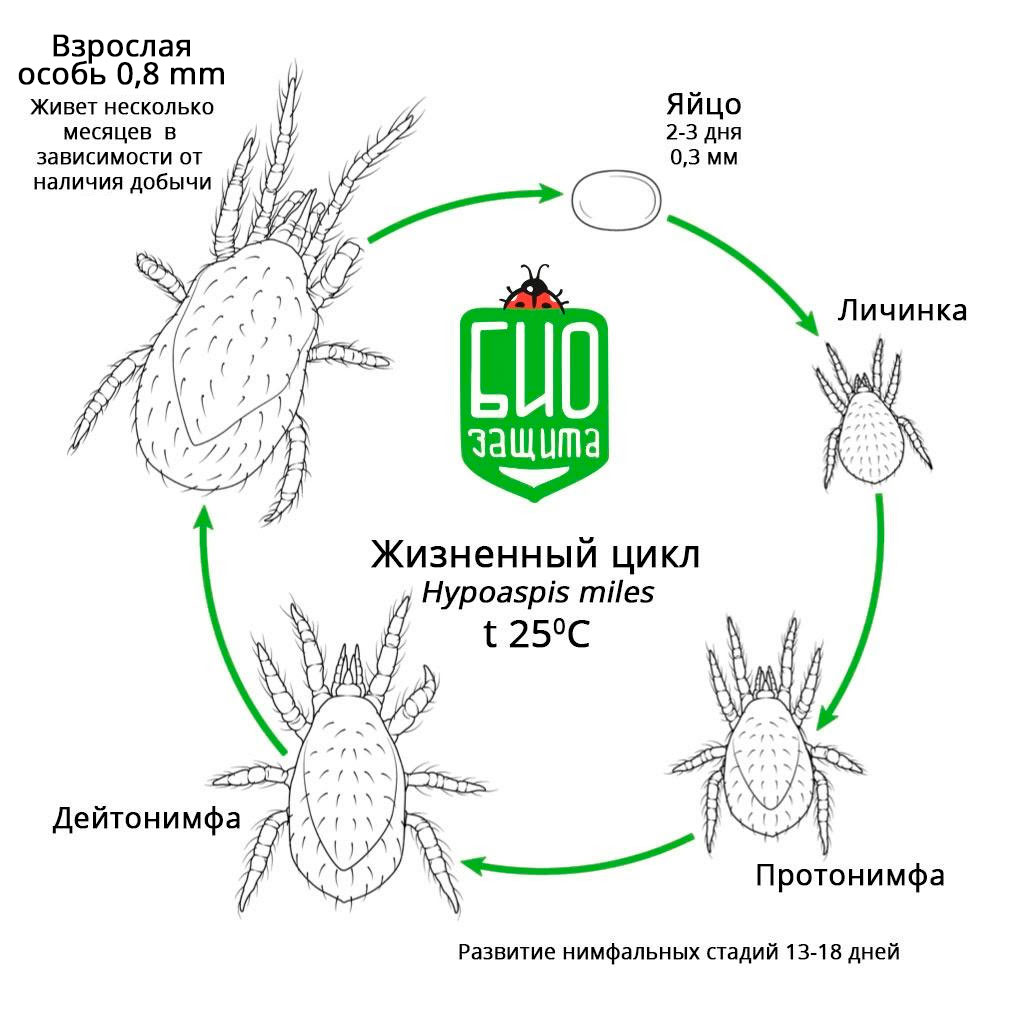
Life cycle of Hypoaspis miles has 5 instars: egg, larvae, protonymph, deutonymph, adult (female or male).
Eggs of Hypoaspis miles are oval and females lay them in the soil substrate.
Larvae are 6-legged and can enter the next developmental instar without feeding.
Protonymphs and deutonymphs are 8-legged, dark brown, or black. At 25°C the mortality rate of nymphs is minimal and is no more than 5% if the temperature increases up to 30°C. The mortality rate of young species increases by 8-17 times if the temperature decreases up to 15°C.
| Т °С | Egg | Larva | Nymphs | Egg → Female |
|---|---|---|---|---|
| 15 | 11,9 | 3,1 | 18,6 | 33,7 |
| 20 | 5,9 | 1,9 | 9,7 | 17,5 |
| 24 | 4,0 | 1,0 | 9,7 | 11,4 |
| 28 | 3,1 | 1,0 | 5,5 | 9,2 |
Females of the predatory mite eat about 8 gnat’s larvae of the first instar per day, or about 4 larvae of the 2d instar, or no more than 2 larvae of the 3d instar. The predatory mites hardly feed on eggs and pupae of sciarid.
The application of scattering material begins in the seedling part. As a prevention application rate of Hypoaspis miles is 100 individuals/m2. This standard is calculated individually based on the area of the seedling part and its characteristics. We recommend releasing the predator in the seedling compartment, at least along the outline of the tables on the latest 2-3 cubics, where your plants have been placed. If the sciarid or thrips population has already colonized the crop, the application rate is increased up to 300 individuals/m2 to reduce the pest population more rapidly. For potted crops, the application rate should be determined by the stillage or soil area that occupies the pot. If there are open parts of soil or another substrate, the predator should be applied in this area as it may be colonized by sciarids and other phytophages.
It is necessary to carry out the 2d release in the main production area, the most effective application rate is 300 individuals/m2. We advise to scatter predators on each cube, but you can also do it on every 2d or 3d one.
In a case of thrips outbreak, preferably before using Hypoaspis miles, you should put into the substrate and soil entomopathogenic nematodes Steinernema feltiae, which partially kill thrips in the soil, but most importantly they will kill the soil Sciaridae larvae. In this way, there will be insufficient feed and Hypoaspis miles will be beneficial maximally in the control of the thrips. Without introduction of entomopathogenic nematodes, there will be a large abundance of Sciaridae larvae and flies, the predatory mite will be fed, its population will grow, but the control of the thrips will be insufficient.
In general, the application standards and protection strategy are individual in each greenhouse. Our specialists will give precise recommendations after studying the problems.
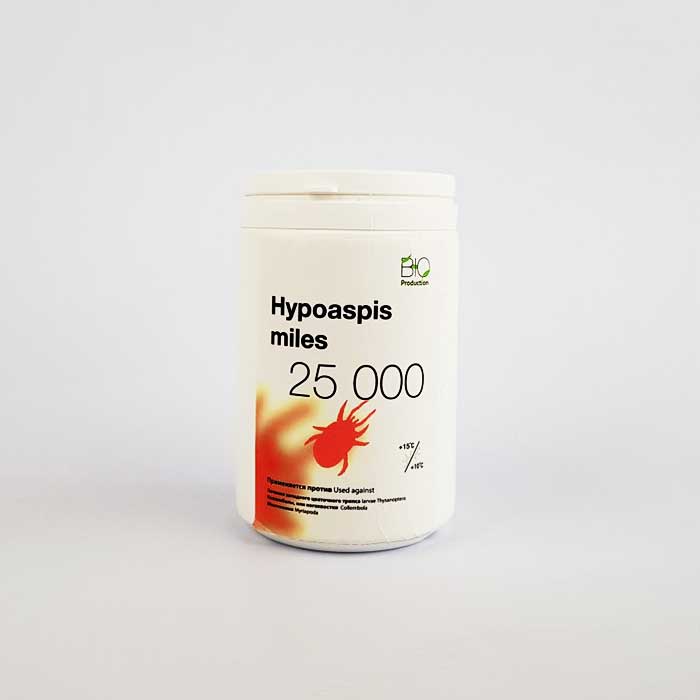
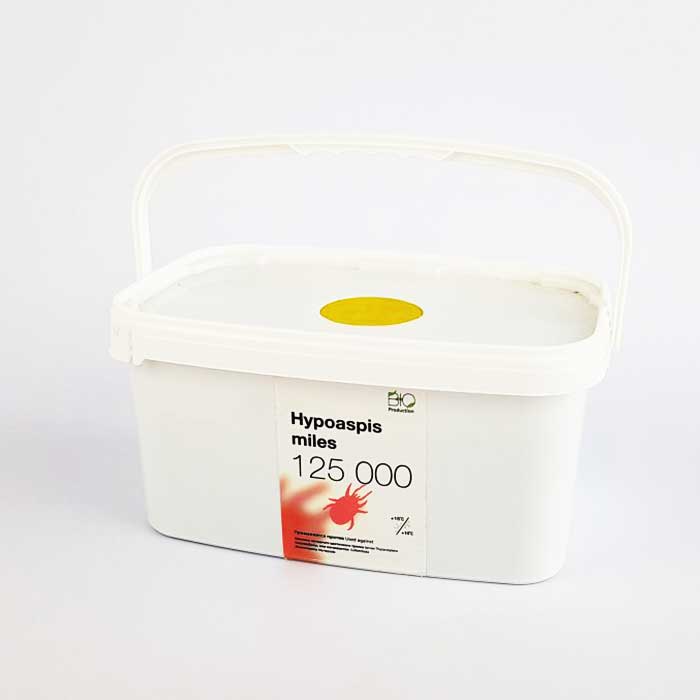
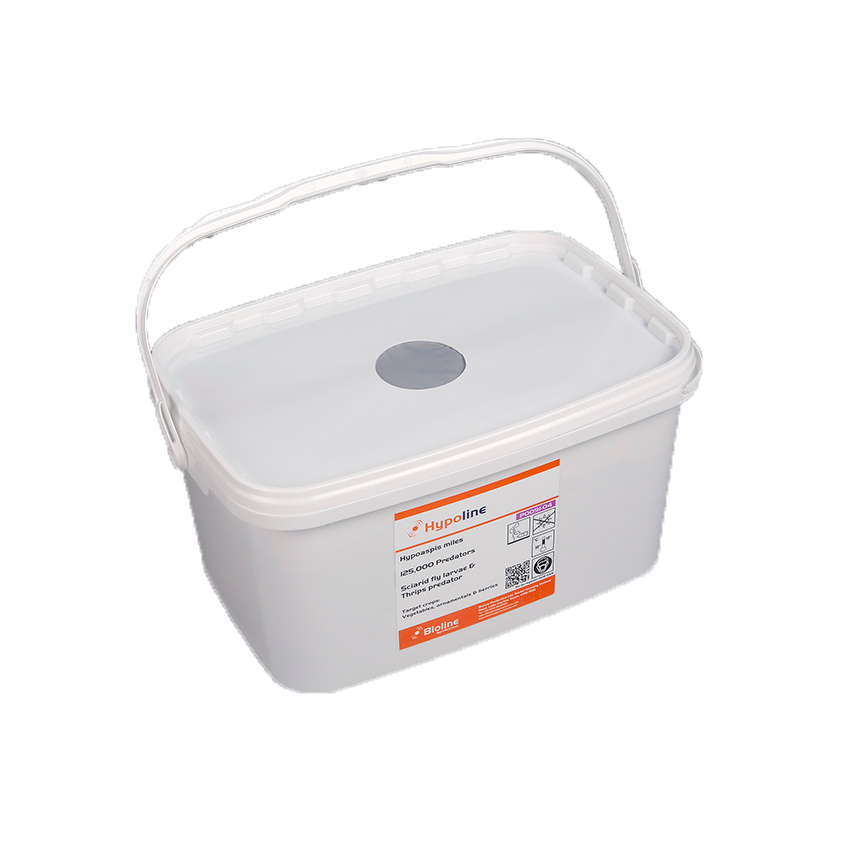
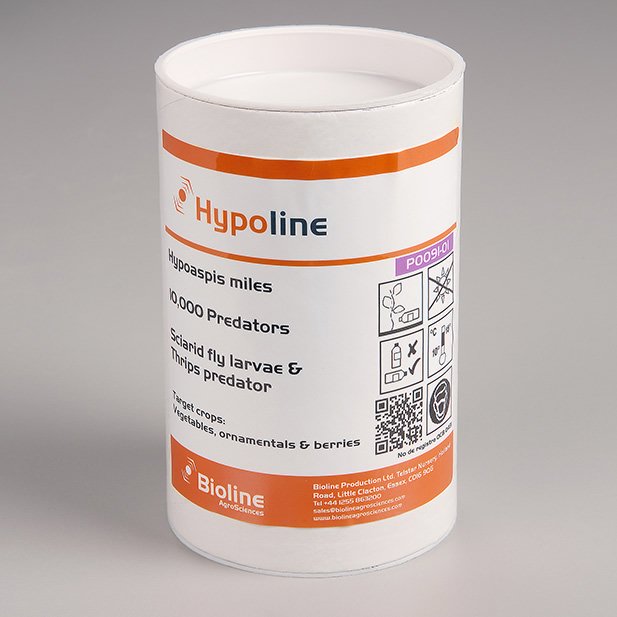
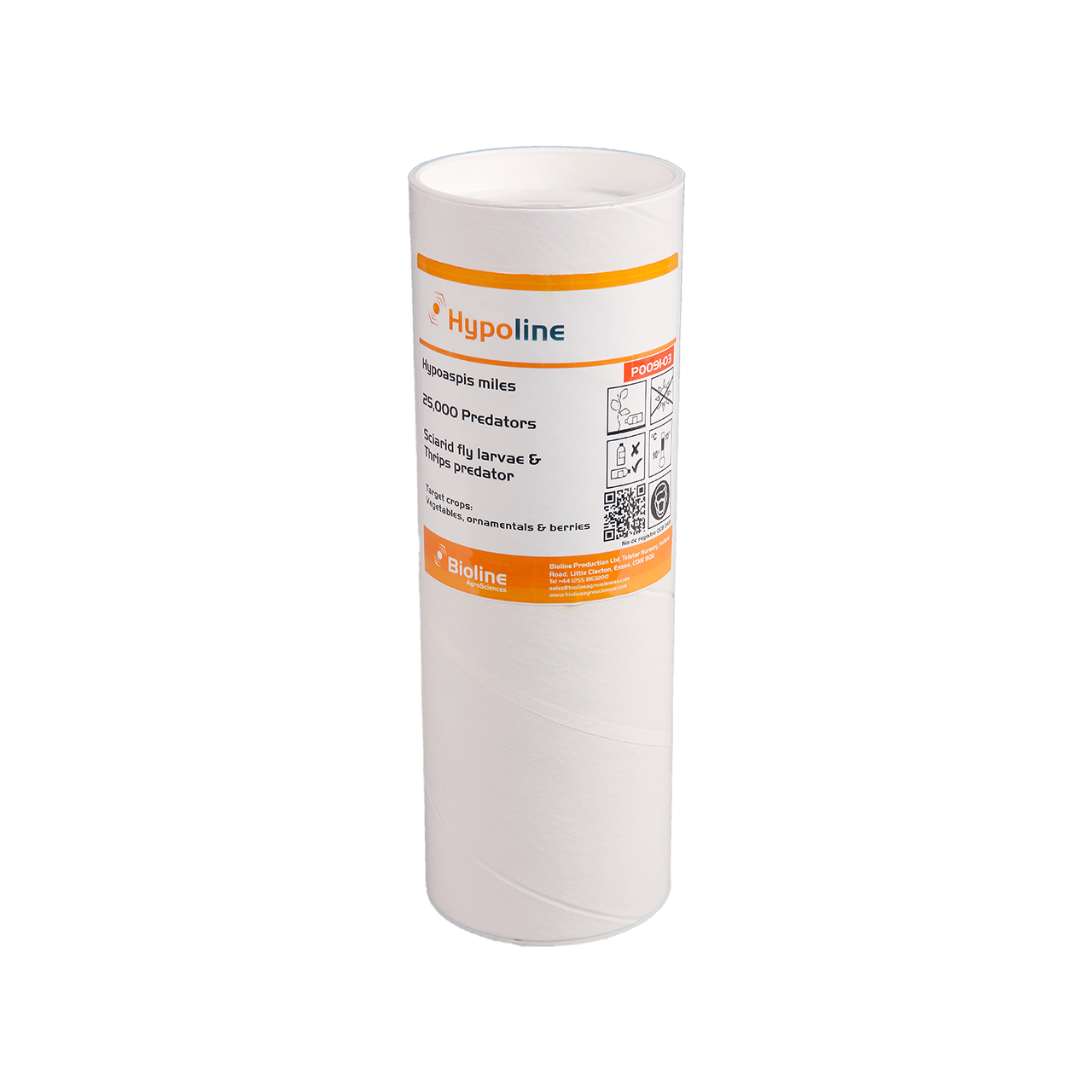
Оставить комментарий